ART CITIES: Stockholm-The Third Hand, Maurizio Cattelan and Moderna Museet’s Collection
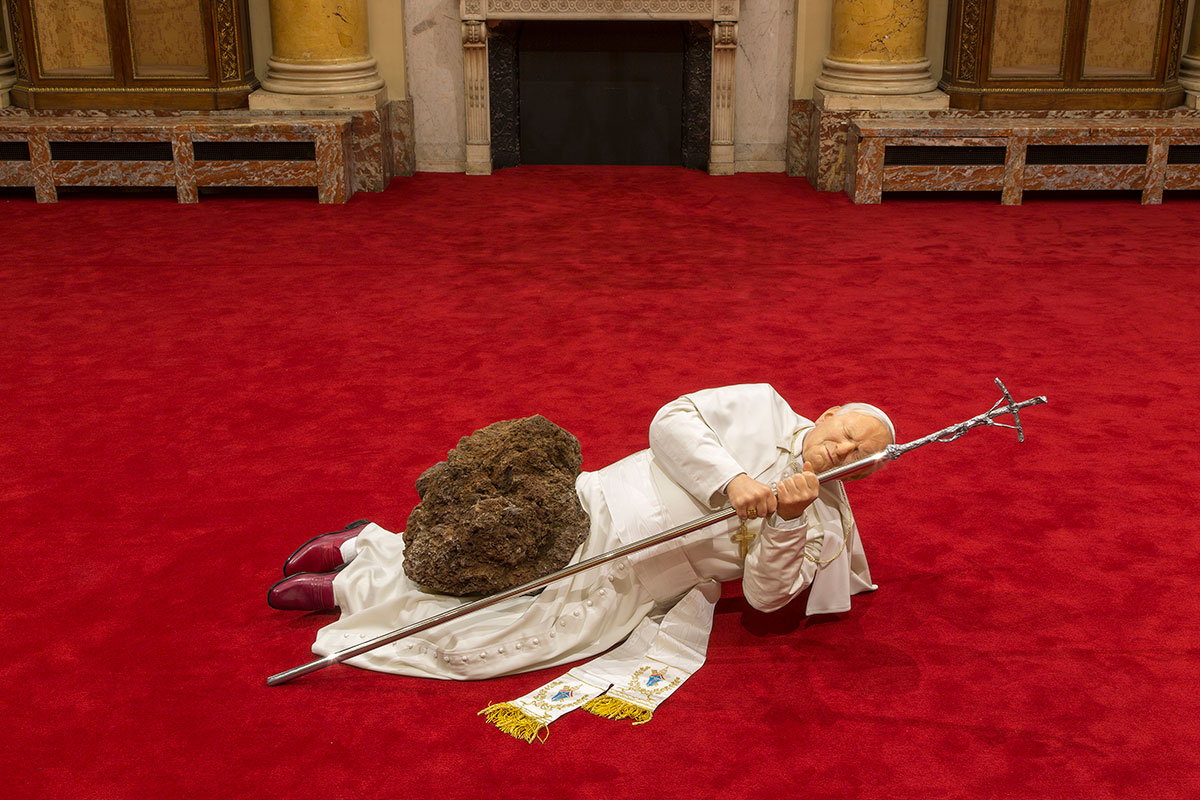 Since the early 1990s Maurizio Cattelan has been internationally recognized for his humorous and ironic works which provoke and challenge the limits of contemporary value systems. In choosing symbols whose representations offer complex systems of intertwined meaning, Cattelan’s work refuses to take a precise moral or ideological position. In 2011, just as his retrospective at the Guggenheim Museum in New York opened, Cattelan declared himself retired from the world of art. After a five year hiatus, Cattelan returned with a site-specific work installed at the same museum.
Since the early 1990s Maurizio Cattelan has been internationally recognized for his humorous and ironic works which provoke and challenge the limits of contemporary value systems. In choosing symbols whose representations offer complex systems of intertwined meaning, Cattelan’s work refuses to take a precise moral or ideological position. In 2011, just as his retrospective at the Guggenheim Museum in New York opened, Cattelan declared himself retired from the world of art. After a five year hiatus, Cattelan returned with a site-specific work installed at the same museum.
By Efi Michalarou
Photo: Moderna Museet Archive
The exhibition “The Third Hand (Maurizio Cattelan and Moderna Museet’s Collection)” includes several of Maurizio Cattelan’s most iconic works alongside works that he has chosen from Moderna Museet’s collection. Born in Italy in 1960, Maurizio Cattelan has been living in Milan and New York for the past thirty years. The scrutiny of power and belief systems is a theme that runs through his entire body of work but he leaves the interpretation of his artworks to the viewer: A pope is struck down by a meteorite, pigeons watch us from above, a shrunk Sistine Chapel lets us see all the amazing details at eye level, a dictator becomes a pathetic figure, perhaps asking for forgiveness, a monumental fascist greeting is nullified by missing fingers, a man and a dog seem to share a common dream or death… The exhibition’s title is open to interpretation. Perhaps it is Maurizio Cattelan himself who is the third hand, who inserts himself between the institution Moderna Museet and its collection to interrogate and shine a critical light: Which art should be part of a collection? Which works should be exhibited? What or who decides what is important art? Maurizio Cattelan’s encounter with and selection from Moderna Museet’s collection extends over six galleries, in which works by Swedish and international artists are shown together with his own. Maurizio Cattelan believes in the power of art, not authorities. “The Third Hand (Maurizio Cattelan and Moderna Museet’s Collection)” comprises six exhibition rooms in which Maurizio Cattelan’s work meets artworks by Swedish and international artists from Moderna Museet’s collection, including Eva Aeppli, Eija-Liisa Ahtila, Cecilia Edefalk, Lena Svedberg, Rosemarie Trockel and the editorial staff of the underground magazine PUSS. In each exhibition room, art takes on a new perspective on power. Positions are turned around and power relationships shift: between art and religion, art and politics, art and military force, art and power as an abstract, subtle phenomenon. Last but not least, Maurizio Cattelan points at conditions and beings that find themselves both furthest down and beyond the food change of society and power – avenging them in this quiet and timeless way. In “Untitled (all five horses together at once, for the first time)” (2013) we see five taxidermy horses hung in a row. But unlike traditional animal trophies that hunters place on their walls comprised of large heads, we are confronted with the horses’ rear quarters, their heads seemingly disappearing into the wall. Two of the horses are artist’s proofs from Cattelan’s 2007 work Untitled, and the other three are 2007 Untitled pieces, on loan from various private collections around the world. In this version, he brought together the five lonely horses into a herd that now, as a pack, have come to make a group decision on how to escape their tragic conditions by jumping into this wall. The stance of the horses almost imply that they leaped willingly into this space, perhaps out of fear, or attempt to escape some danger, or even with a desire to commit suicide. In any case, the dangling bodies also conjure the phrase “horse’s ass” which is used to denote a person who is stupid, incompetent, or a blockhead – something we know that Cattelan himself was always deathly afraid of being considered in his role as an artist. This work first appeared in the “Kaputt” exhibition at the Fondation Beyeler in Basel, Switzerland. The title refers to the novel “kaputt primavera” by Curzio Malaparte. In the book, the author recounts the tragic death of a thousand horses in WWII who jumped into Lake Ladoga in Finland in order to escape the forest fires caused by aerial bombardments. While in the middle of the lake, it suddenly froze over, trapping them in place.
“La Nona Ora” (1992) consists of a life-sized sculpture of Pope John Paul II lying on a red carpet, clutching the papal cross, and being crushed by a meteor. The original installation at the Kunsthalle Basel was located directly under a shattered skylight, with shards of glass around the fallen pope. The work is a prime example of Cattelan’s hyperrealist sculpture, wherein he creates the illusion of reality to lure in the viewer, and then adds elements of the uncanny to tweak the viewer’s perspective, or even complacency. Th title of the work refers to the Liturgy of the Hours of the Catholic Church, that is, the official set of prayers, palms, hymns, and readings that mark the hours of, and sanctify, each day with prayer. Within this cycle, the ninth hour is the supposed hour of Christ’s death on the cross, shortly after crying out “Father, father, why hast thou forsaken me?” The work has been interpreted in various ways. Some see it as a condemnation of the Catholic Church’s reputation for scandal and immoral behaviors beneath its sanctified veneer. It may also suggest God’s own condemnation, via heavenly meteor, of a church that has become bastardized by the ego, greed, and sins of man. The apparent survival of the Pope, and the stern determination upon his face, also signifies that he will rise again and speaks to religion’s eternal presence among man. After its original run at Kunsthalle Basel, the piece was shown in 2000 at the Royal Academy in London, and later that year at the Zacheta Gallery of Contemporary Art in Warsaw. The latter exhibition in Poland was bound to be problematic, as it was the homeland of its subject, Pope John Paul II. It was also a time when the country was making a return to conservative right-wing politics. Indeed, the work caused a great deal of controversy when two members of Poland’s Parliament removed the meteor and attempted to stand the wax Pope upright. The two politicians also led a petition with ninety other members of Parliament, demanding the dismissal of the gallery’s director, Anda Rottenberg. Cattelan later commented on the Warsaw controversy, saying “what happened in Poland was a sort of upside down miracle: salvation wasn’t coming from the sky but from the earth, from the people”.
Photo: Maurizio Cattelan, La Nona Ora, 1999 Photo: My Matson/Moderna Museet © Maurizio Cattelan 2024
Info: Curator: Gitte Ørskou, Moderna Museet, Skeppsholmen, Stockholm, Sweeden, Duration: 23/2/2024-12/1/2025, Days & Hours: Tue & Fri 10:00-20:00, Wed-Thu & Sat-Sun 10:00-18:00, www.modernamuseet.se/stockholm/
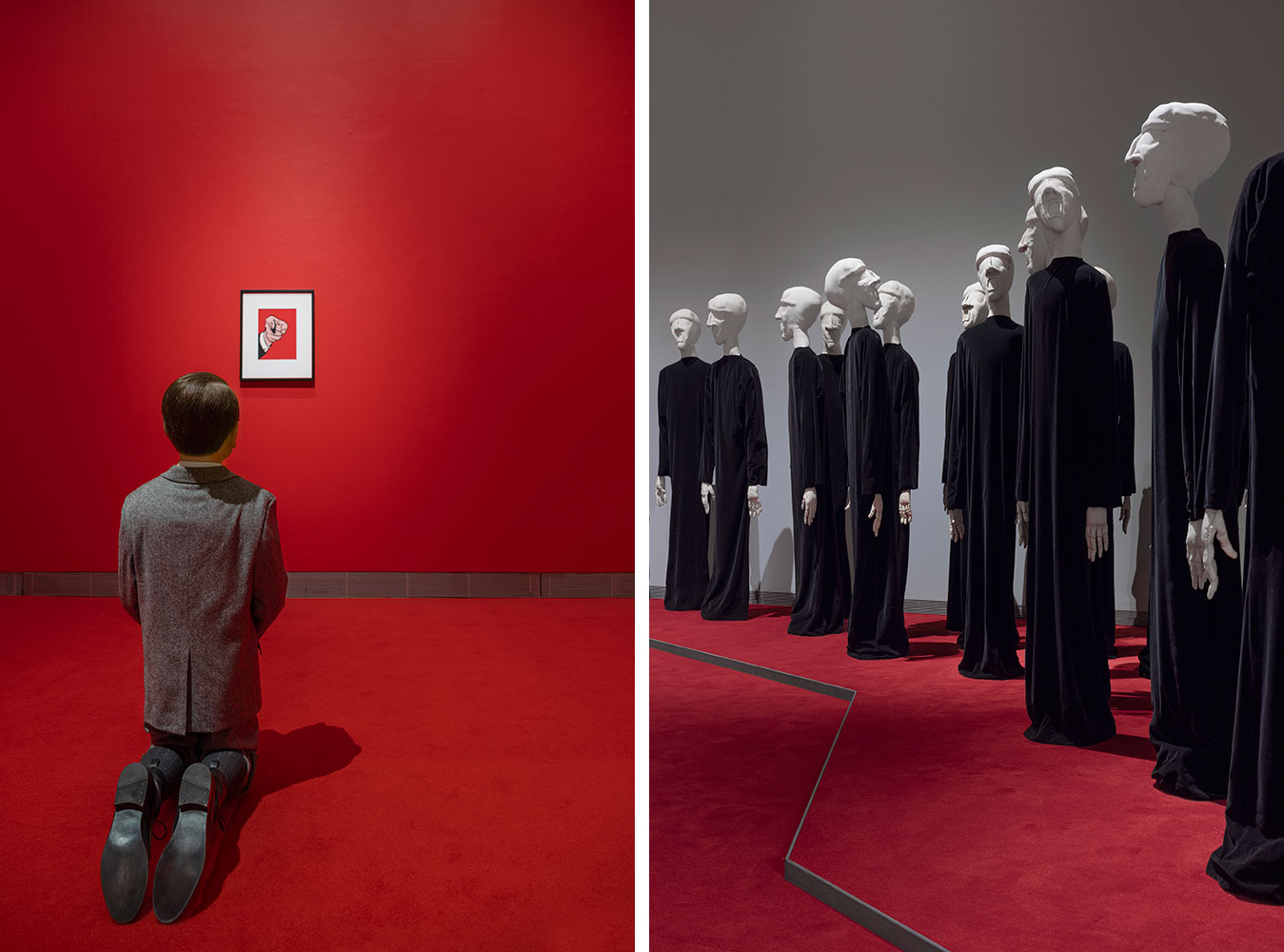
Roy Lichtenstein, Finger Pointing. (1973) © Roy Lichtenstein. Photo: My Matson/Moderna Museet
Right: Eva Aeppli, Groupe de 48, 1969-1970 Photo: My Matson/Moderna Museet © Eva Aeppli 2024

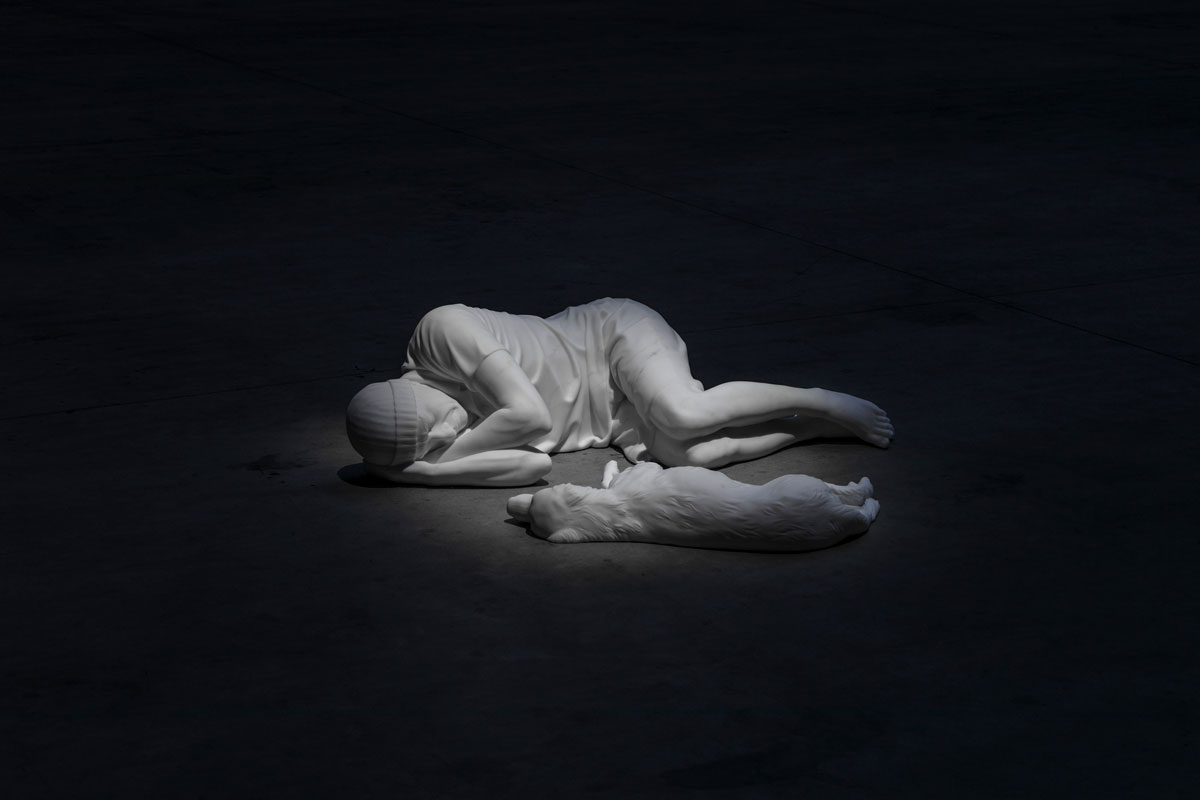
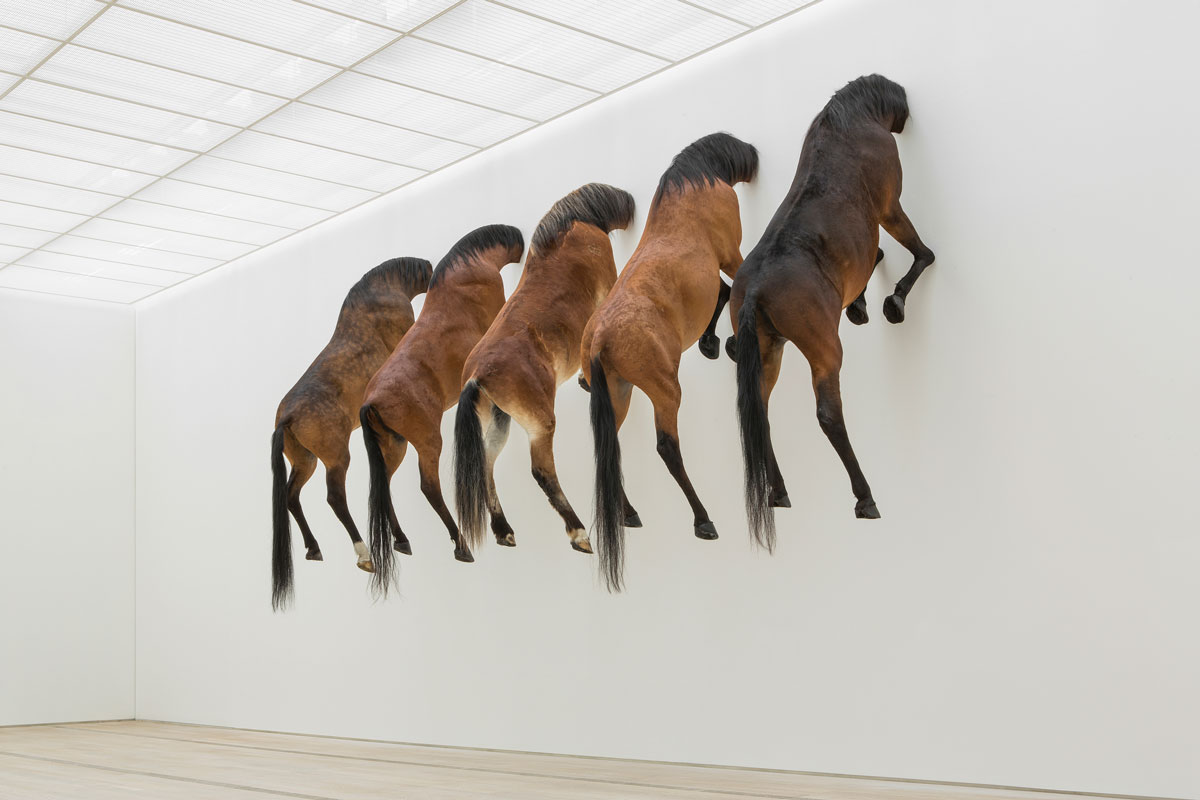
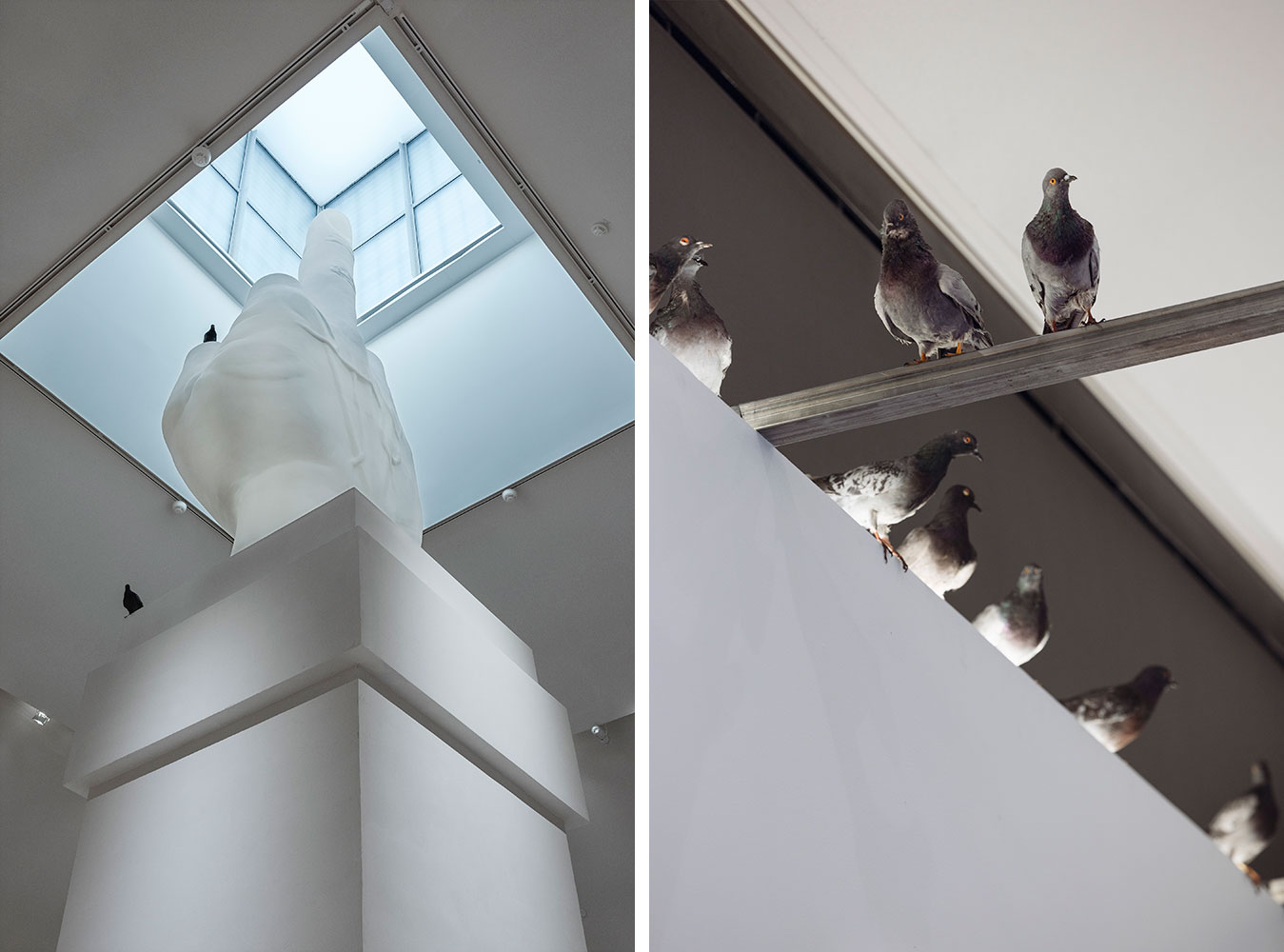
Right: Maurizio Cattelan, Ghosts, 2021 Photo: My Matson/Moderna Museet © Maurizio Cattelan 2024


Right: Pussredaktionen, PUSS (KISS) issue 7, 1968 Magazine cover. Photo: Prallan Allsten/Moderna Museet, © Pussredaktionen/Bildupphovsrätt 2024
